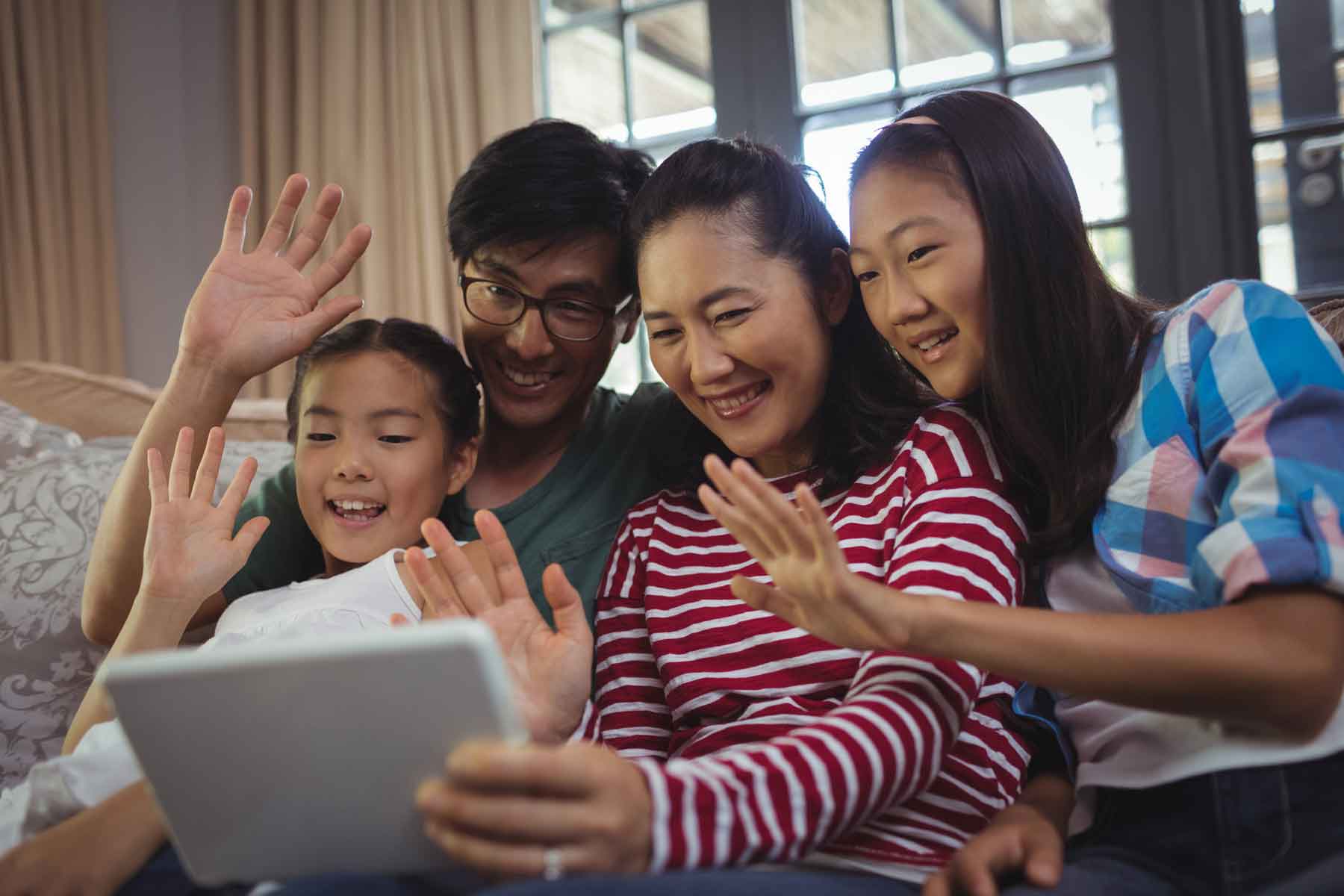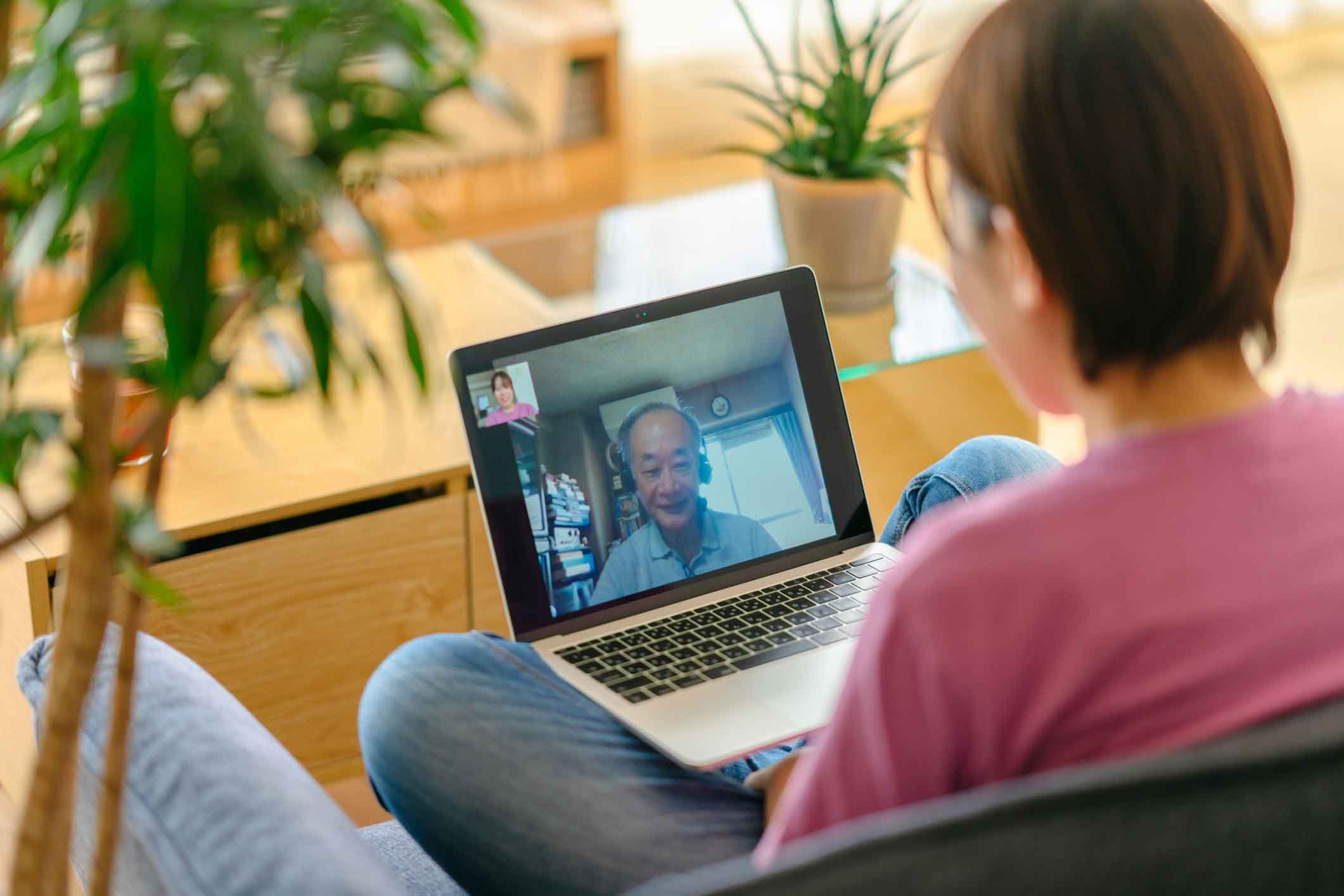How to nurture connections with family and friends from afar

As the world opens up again and we reflect on the emotional impact of life in a COVID-19 era, many of us have re-discovered the true importance of family and friends. This period proved we will always be compelled to connect, but we have had to learn new ways of bonding.
Our communication shifted almost exclusively to online, from our professional to our personal lives. But as we move into a new normal, where gatherings with family and friends will be different for some time, and reunions with loved ones overseas may take longer than hoped, you may be looking for more ways to strengthen family relationships and feel part of your world. “Just because we are “socially distancing” doesn’t mean we have to socially disconnect,” say researchers Alicea Lieberman and Juliana Schroeder in Behavioural Scientist.
As support networks of family and friends remain ever-important, here are some tips for subtle shifts that can make our moments of connection even more meaningful.
Take the time to do more than text
We’re all accustomed to texting a quick message to check in on our loved ones — and it isn’t uncommon to also engage in long conversations this way. But, just like email, text messages lack important nonverbal signals, such as tone of voice. Think of the ways that you change your voice to share an inside joke, tell a story, or to help soothe — the human voice is a powerful tool for creating an instant connection. According to Lieberman and Schroeder, text-only communication can reduce people’s understanding of thoughts and feelings. They add that losing access to vocal cues can also reduce feelings of social connection.
Whenever possible, turn to a video call. One study published in Cyberpsychology examined the experience of bonding between friends over digital and face-to-face communication — participants revealed that an emotional connection was felt most strongly during in-person interaction, followed by video chat, audio chat, and instant messages in that order. Important nonverbal cues such as nods, smiles, hand gestures and leaning in to listen during conversation signal affection and closeness, enriching the experience of bonding.
“When your goal is to connect or strengthen understanding, use phone calls and video chats to implant nonverbal cues back into your conversations,” add Lieberman and Schroeder.
Take a tradition online
The new normal of communicating online challenges us all to be more creative when it comes to catching up with family and friends.
James Chiang revived a 15-year poker game tradition with old friends living in Singapore and overseas during Circuit Breaker. “Taking everything online actually facilitated our first virtual, cross-country game, which we’d never thought to do before,” he says. It also provided a much-welcome escape. “You don’t need to talk about COVID-19, or the news — there’s an activity to engage in, and I think conversations are more organic and flow freely this way than in an organised Zoom chat,” he says. “It was something I’d missed.”
If family bonding has long taken place over food, the all-important family dinner is still possible, as Bing Blokbergen-Leow proved. Over eight weeks of the Circuit Breaker, she preserved the weekly meal with her siblings and neice in Singapore, and was even able to extend the tradition by including a cousin who lives in Osaka on her birthday — with the help of Zoom. “We are a close-knit foodie family, and food is a powerful tool through which we bond and express love,” she says. “So when we started the idea of virtual family dinners, we decided we would continue to share the same menu and start the dinner together with our customary ‘大家吃’ (tai ka sik) spoken in Hakka.”
“The dishes were generally inspired by cravings and food memories,” she adds. “At one of our dinners, I commented how I craved good chilli crab. The next day, we received a cryptic photo of several Asian ingredients in a basket, sans the protein, with the message ‘guess what’s for tonight’s surprise dinner’. So it seemed the craving rubbed off on my brother, because he sourced fresh mud crabs and made a large portion of chilli crab, resulting in an impromptu second virtual dinner that week. I remember thinking that very moment — how loved I felt, how lucky I was to have such an amazing family,” she recalls.

Now is the time to nurture relationships with the next generation
It’s just as important to keep checking in with young adults and children in the family — who may be needing support or to be heard at this time too. Mental health professionals and researchers around the world are already exploring the effects on children and teens in light of the disruption to school life, social isolation and the pandemic itself.
Alice Fothergill, in her 2017 study Children, Youth and Disaster, pointed out that many children aren’t proactive in talking about their emotional distress with adults in their families, but adults also may not be asking about how they are feeling, and there is an assumption that the children will adapt to difficult situations. However, “Children and youth do well with support, consistency, and warmth in a disaster situation from their parents and other significant adults in their lives.” Within our own families and close networks, it’s important to keep Investing time in conversations and moments of connection with nieces, nephews and family friends, even if it simply shows that you value your relationship.
For grandparents, it can mean the world to connect on a regular basis and feel part of your grandchildren’s childhood when you’re physically apart for long periods. After all, according to a study conducted by the American Sociological Association (ASA), grandparents and grandchildren have real and measurable effects on each other’s psychological well-being that last long into grandchildren’s adulthood.
Try setting aside one-on-one time beyond the regular family call to build your relationship with a grandchild, and create a new ritual together. Jenny Lee, who lives in Sydney, started daily storytelling sessions with her eight-year-old grandson Max, who lives in Singapore, over the Circuit Breaker period — and it’s a tradition they’ll keep. “The one-on-one sessions have felt very intimate and connecting daily has made communication online much more natural,” she says. “The storytelling has been key. We started with a task: reading to each other, from the same book. This led to comments, laughter and then chats about other interests once the reading task was completed. There is now a stronger sense of him being part of my life, and hopefully of me being more a part of his,” she adds.
Remember the small things matter too
You don’t need a birthday or for important news for a virtual gathering. Sharing small moments can carry plenty of meaning, as proved by the global phenomenon View From My Window. As the world went into lockdown, this Facebook feed invited people to share a single photo that depicted what they saw from their window. It became a movement that attracted 2.3 million followers across the world within weeks, praised by its members for bringing “joy and momentary relief”, and for showing that “we are truly connected, if only for a few minutes a day.”
The next time a piece of music moves you, a recipe inspires you, or you see something beautiful, be open to sharing more of what’s happening in your world — it can open up small, but strong connections that are felt from afar.

